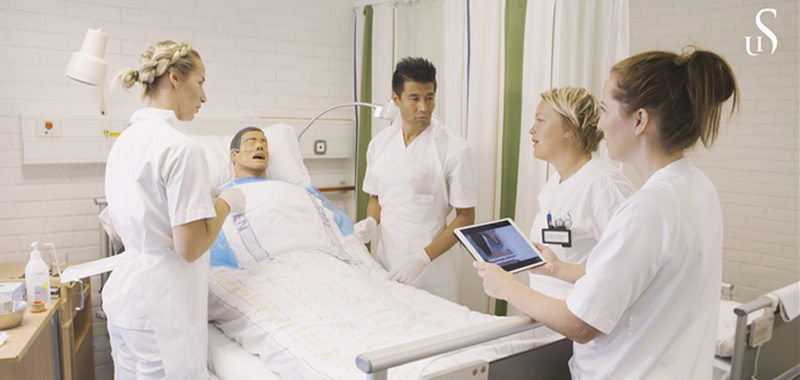
University of Stavanger (UiS) has recently applied to the Norwegian Directorate for Higher Education and Skills (HK-dir) to achieve status as Centre for Excellent Simulation and eLearning – SIMeLEARN.
The overall aim of SIMeLEARN is to develop and implement excellent, student-centred, innovative learning methods within simulation and e-learning to provide a superior education for future healthcare professionals, who will be equipped to engage in continuous quality improvement for lifelong learning.
SIMeLEARN is organized into four Focus Areas (FAs) with a high mutual synergy. The FAs aim to
- explore and extend the utilization of and state-of-the-art-approaches to Simulation-based learning (SBL) and e-learning methods, through a process of co-creation between students, faculty and clinical professionals;
- improve the transition between education and professional practice; to enable growth into a professional role, balancing conflicting needs and requirements and equipping students with lifelong learning skills to handle the practical complexity of current and future healthcare scenarios;
- develop students’ knowledge about identifying opportunities for improvement in clinical practice, preparing and implementing plans and evaluating the effect of implementations;
- adapt and disseminate best professional practice of simulation and e-learning in education to diverse national and international contexts.
Each FA will have a PhD candidate to boost state-of-the-art in simulation and e-learning.
The consortium is made up of the Faculty of Health Sciences at the UiS, Stavanger University Hospital and SAFER. With the innovative use of simulation and e-learning tools in educational settings, SIMeLEARN will take a leading role, nationally and internationally, in shaping future professional practice in diverse educational contexts. The centre will have a direct impact on 1200+ students in both bachelor and master programmes in health. Contributing to competent, resilient students and professionals will reduce practice shock, drop-out rates and professional burnout, while positively impacting patient safety and workplace quality improvement processes.
Written by Thor Ole Gulsrud, Une Stømer, Peter Dieckmann, Nina Vatland and Camilla Normand, University of Stavanger



